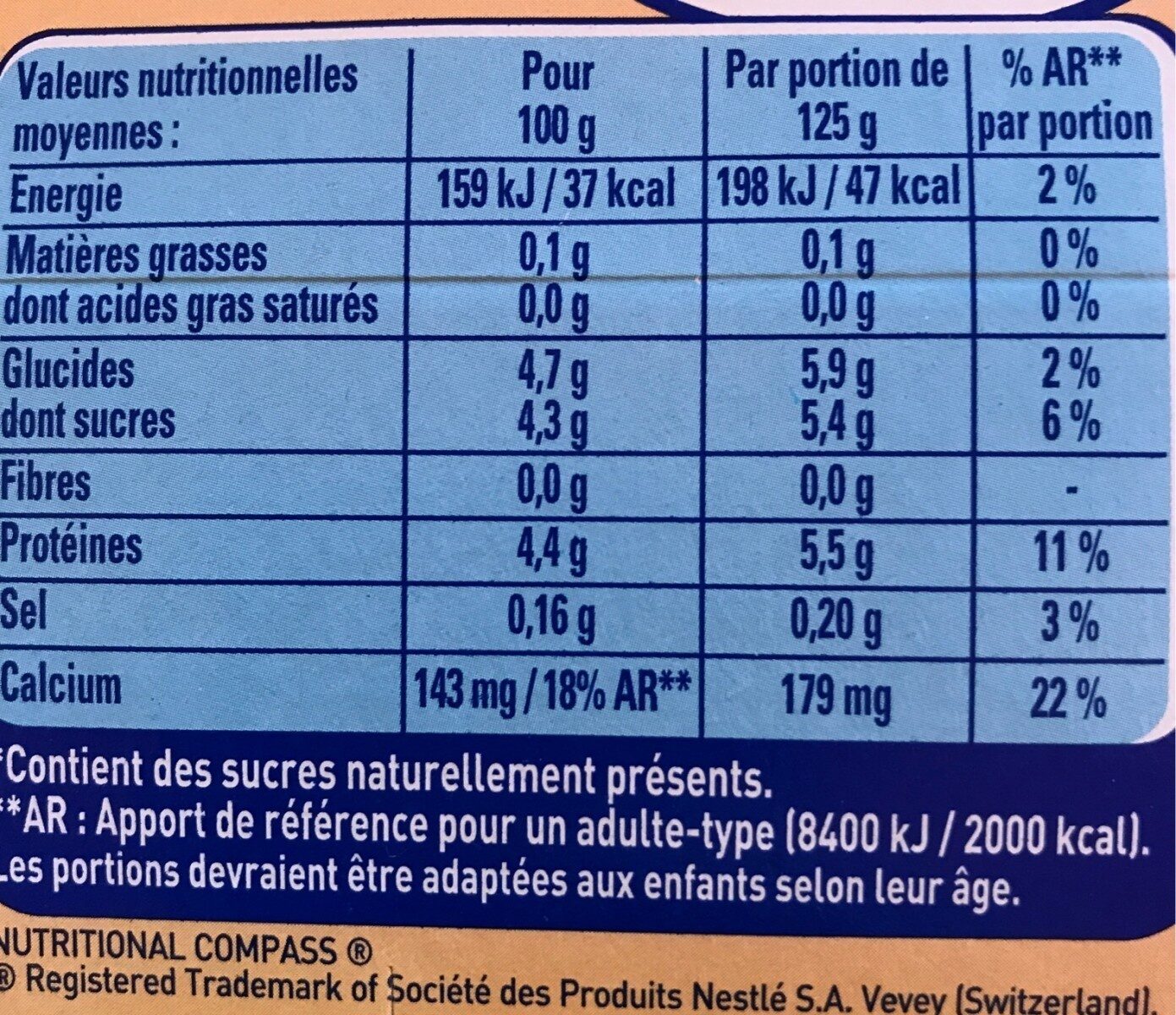Sveltesse Ferme & Fondant Panaché 12 x 125 g - Nestlé - 1,5 kg
Barcode: 3023291415909 (EAN / EAN-13)
Common name: Spécialité laitière à 0 % de matière grasse, aromatisée, avec édulcorants
Quantity: 1,5 kg
Packaging: Plastic, Pot, Cardboard, Fresh, Seal
Brands: Nestlé
Categories: Dairies, Desserts, Dairy desserts
Labels, certifications, awards:
Low or no fat, Low or no sugar, Contains a source of phenylalanine, French milk, Green Dot, No added sugar, No colorings, No fat, With sweeteners, Tidy man, Triman

Origin of ingredients: France
Manufacturing or processing places: Loire, France
Traceability code: FR 42.005.001 CE - Andrézieux-Bouthéon (Loire, France)
Link to the product page on the official site of the producer: http://www.enviedebienmanger.fr/des-marq...
Stores: Carrefour, Magasins U, carrefour.fr, Auchan
Countries where sold: France
Matching with your preferences
Report a problem
Data sources
Product added on by openfoodfacts-contributors
Last edit of product page on by sasa.
Product page also edited by beniben, claires, date-limite-app, dea, driveoff, foodvisor, jacob80, kiliweb, magasins-u, moon-rabbit, packbot, phoenix, quentinbrd, roboto-app, tacite, yuka.VC9vYVBxTWJsOWN4d2N3TTlReU9wZU4wd0srcEExMlJlc3dlSWc9PQ, yuka.VEk4OEFva0NxY2d4dlBjOTJpTC8wNGgyd0lQMWIwNlJNc3d1SVE9PQ, yuka.VzY1UlBhQU9tZGRTdjhFNHdRNzF4OVpMNjhHR1hrT05OL0JNSUE9PQ, yuka.YjRVbFFiaGJuNmNMb2NBYytCMzFxdlpTNE02dldEK0hMT2d6SUE9PQ, yuka.sY2b0xO6T85zoF3NwEKvlmBWUdXv8hnCahXjpHGuzOepA5LMPOhWxrThGqo.











